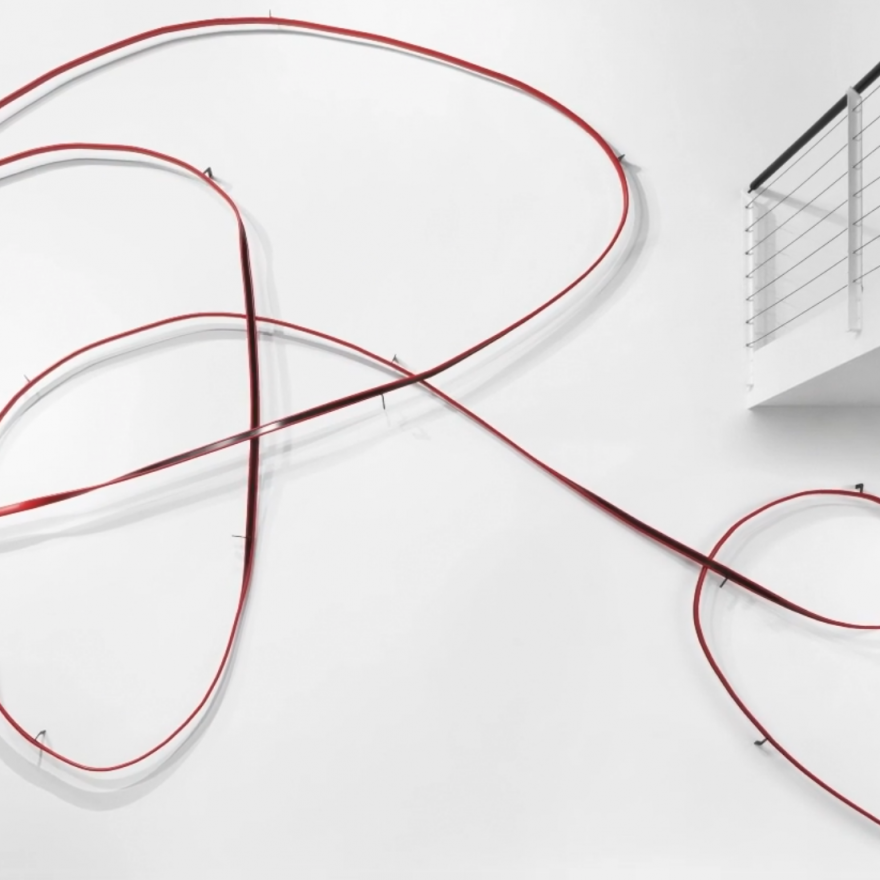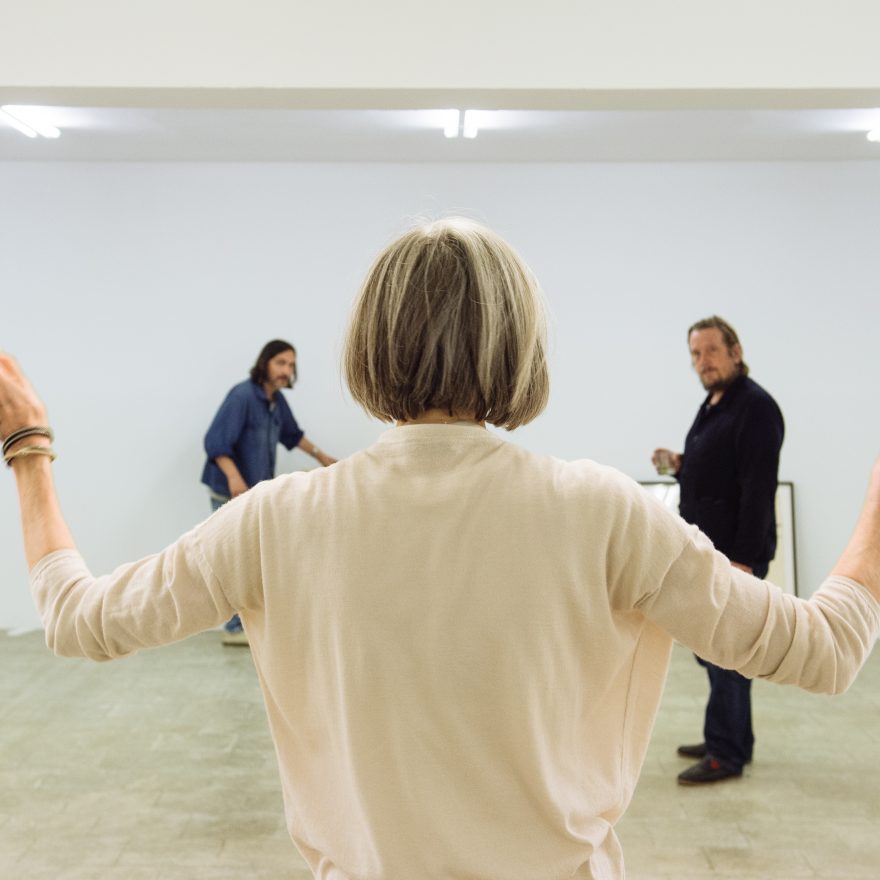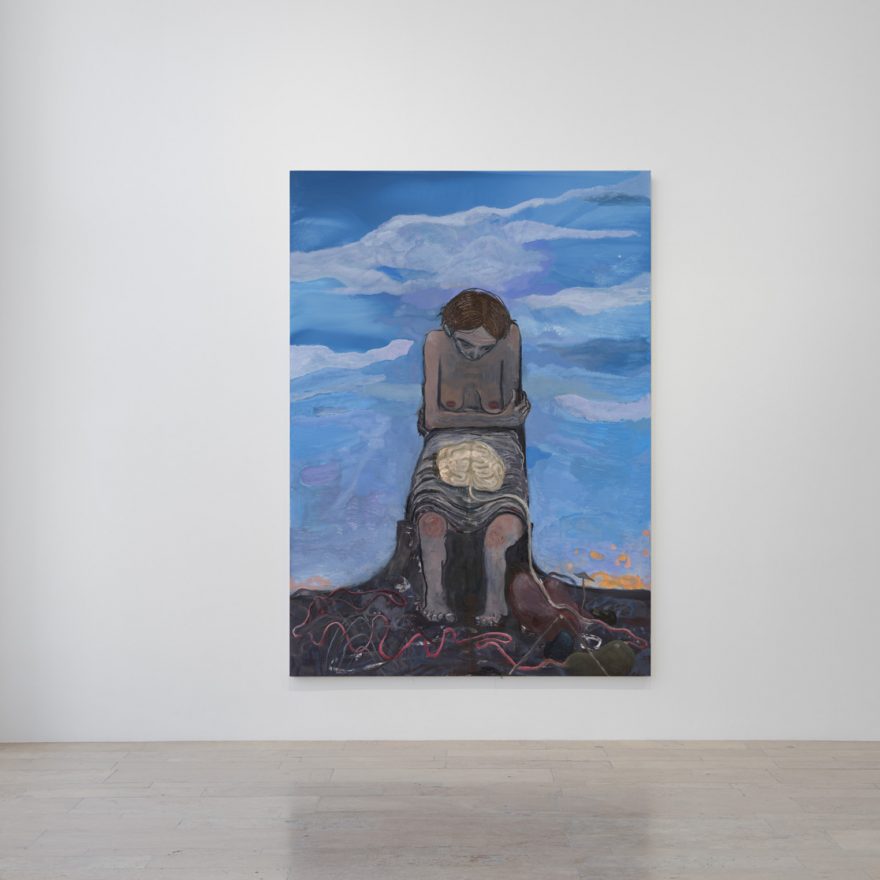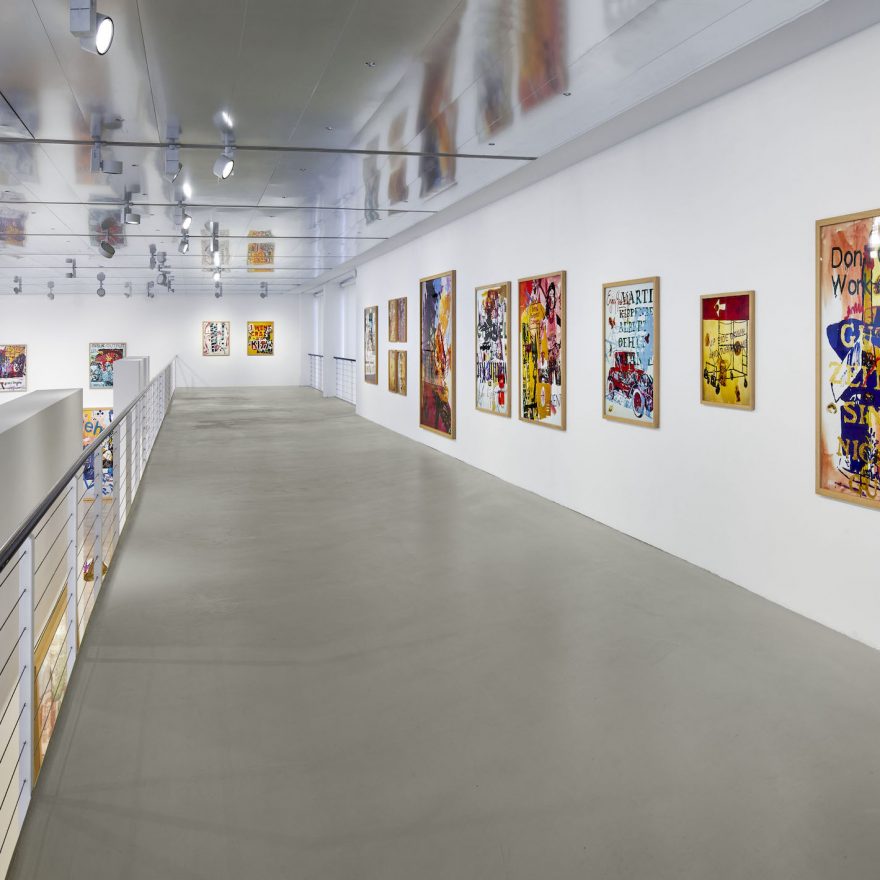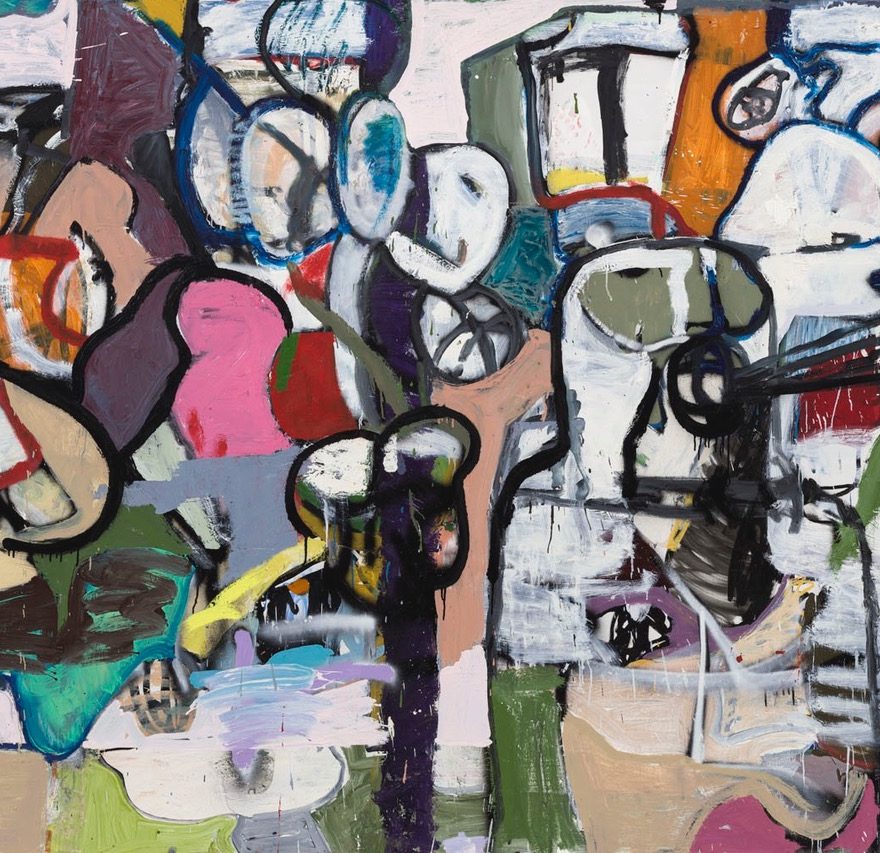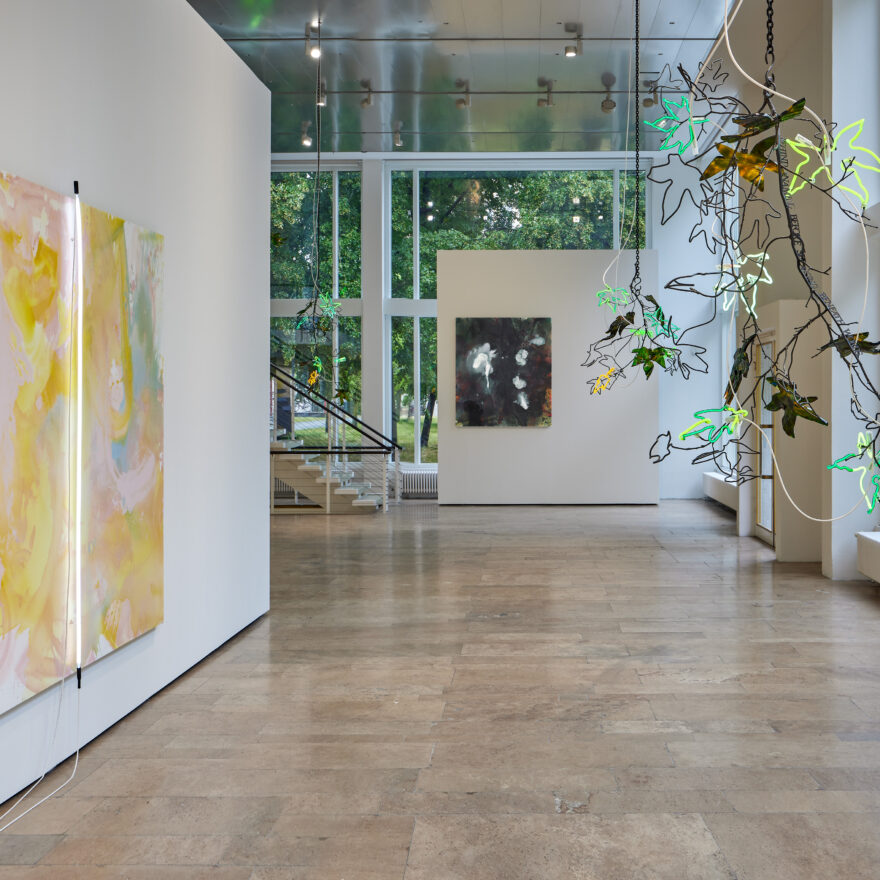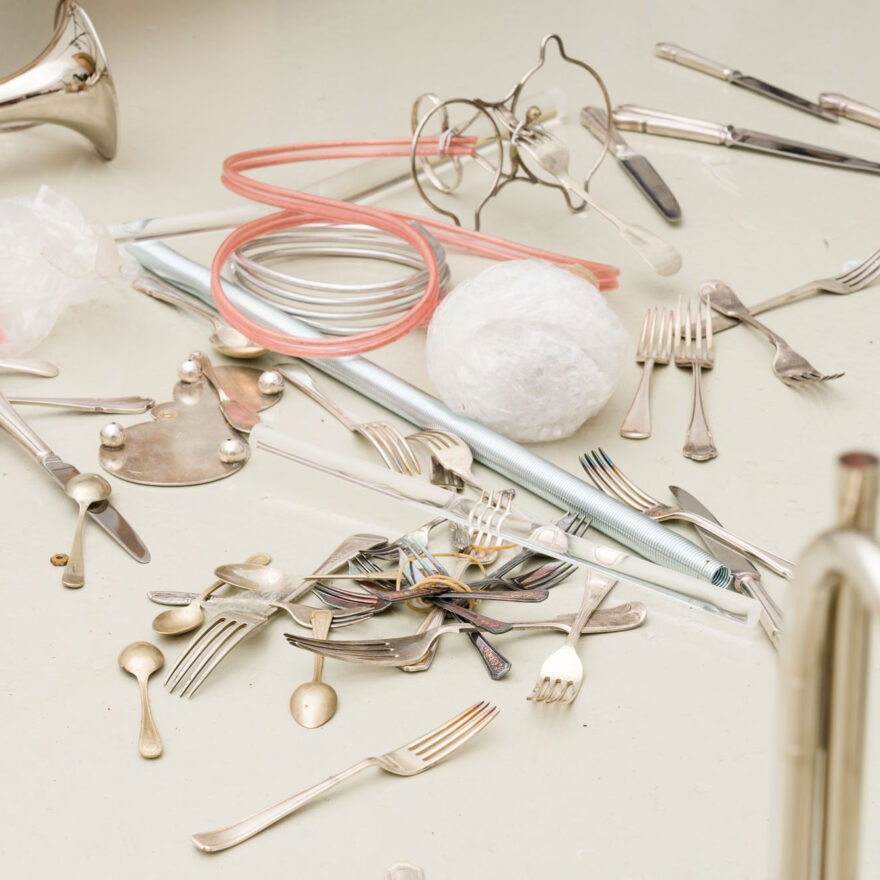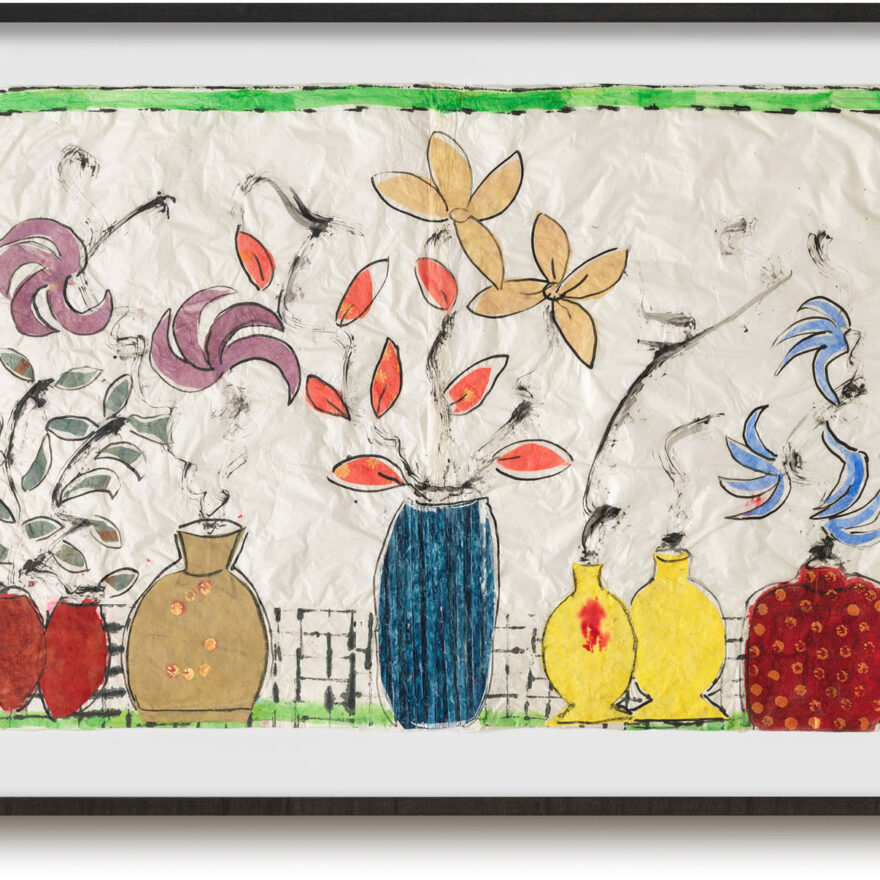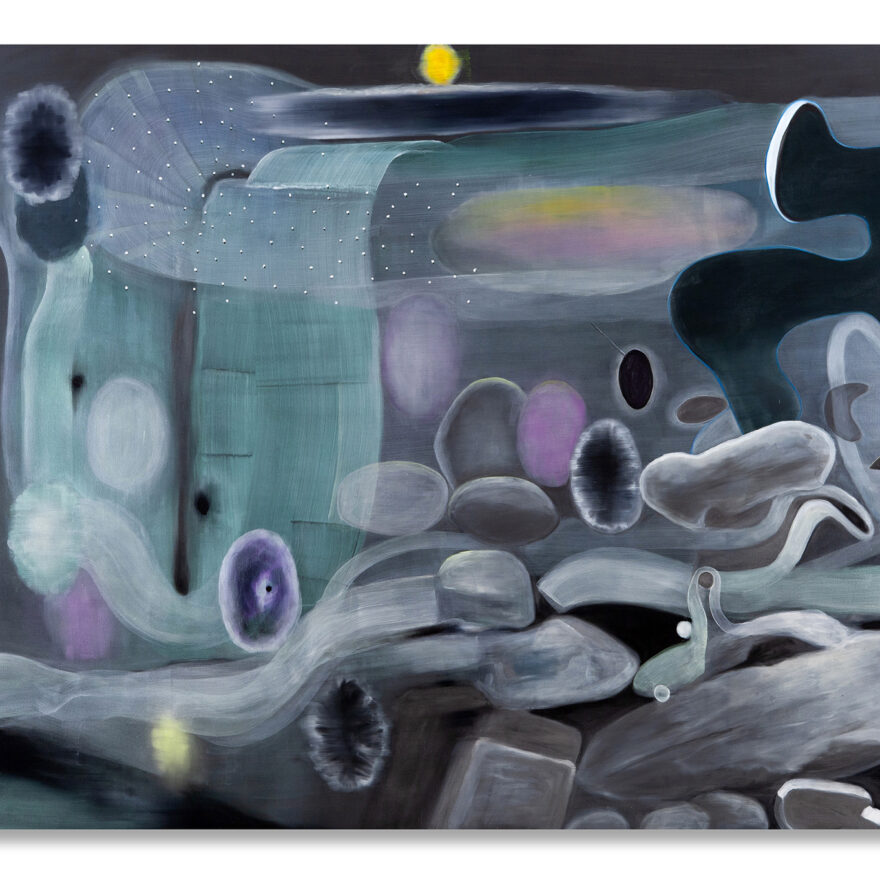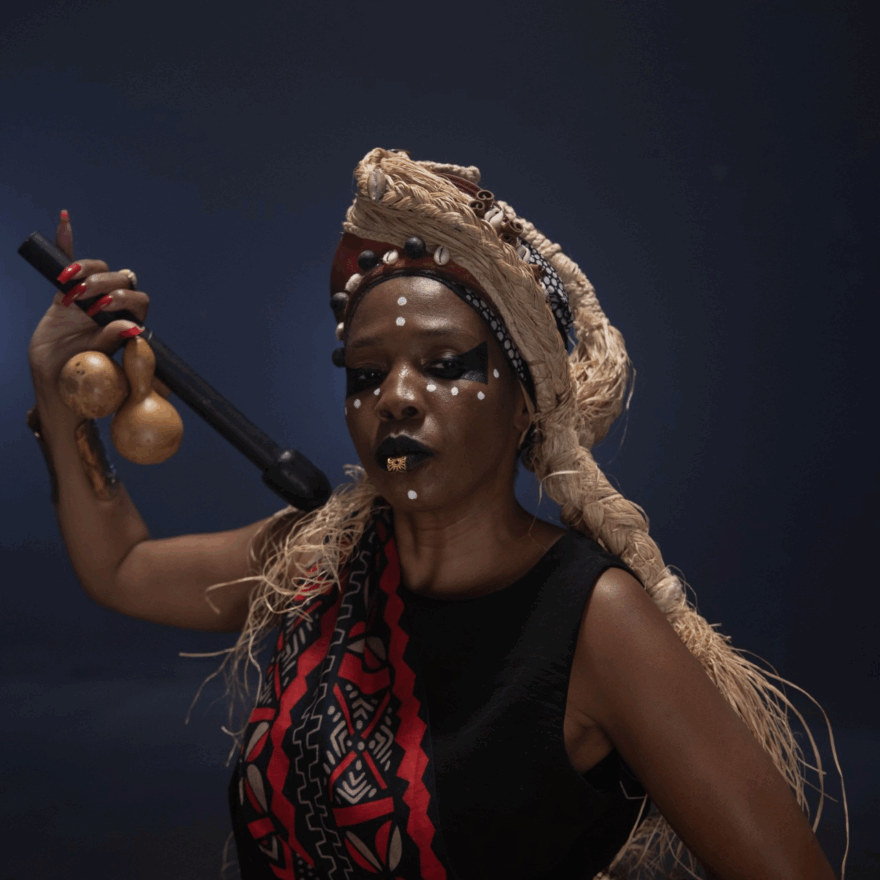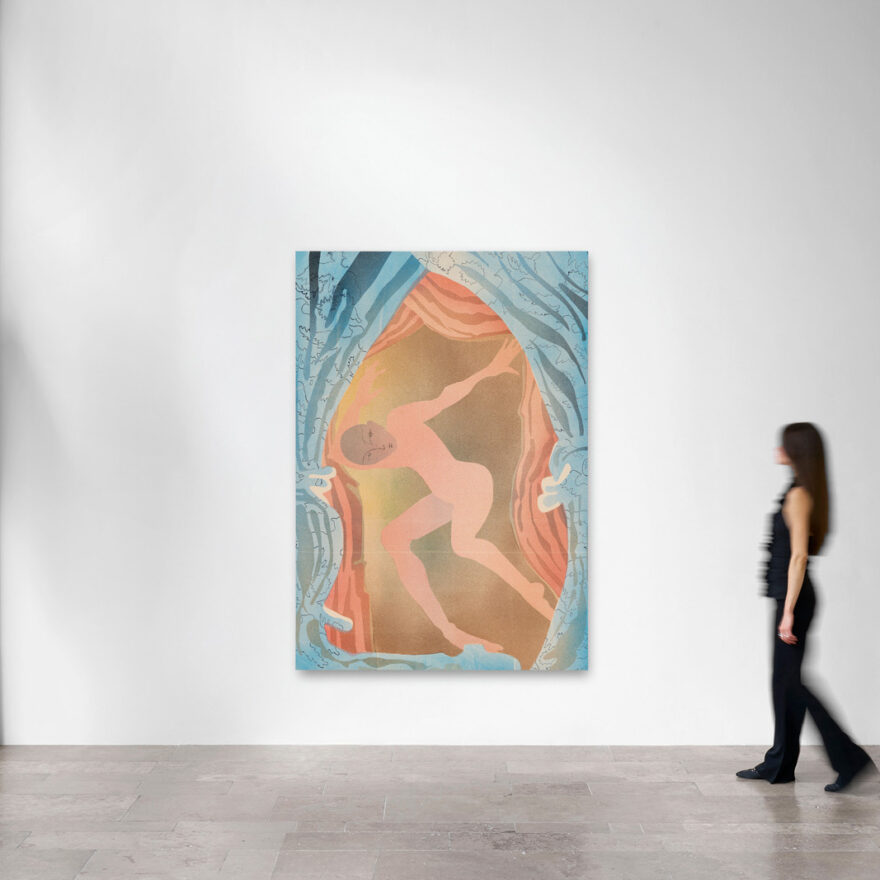Not I
With works by Daria Blum, Hanne Darboven, Gina Folly, William Gaucher, Mike Kelley, Martin Kippenberger, Monika Sosnowska, Ilaria Vinci, Xie Lei, Urban Zellweger.
With a film by Samuel Beckett
10 JAN until 14 FEB 2026
Opening – 9 JAN 2026, 6-8 pm
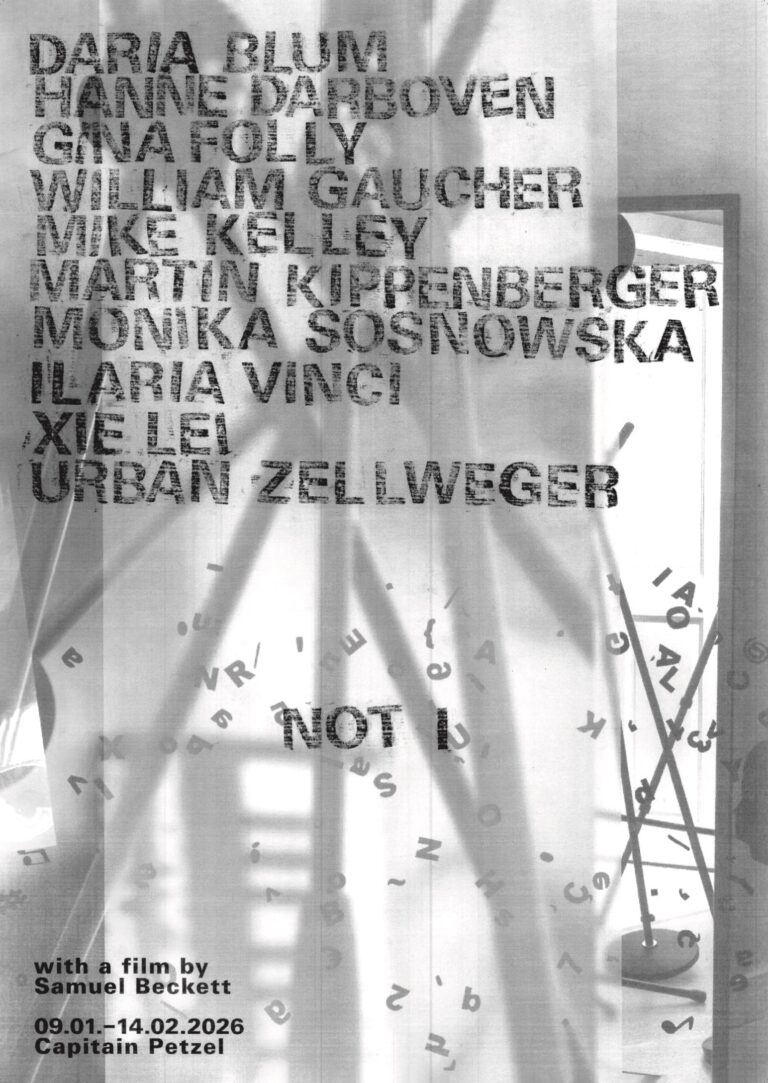
Design: Fabian Fretz
“NOT I is based on the film of the same name by Samuel Beckett, in which a disembodied female voice named Mouth recites a monologue. Mouth pours out involuntary memories: fragments of ideas, recurring images, a sentence heard long ago that she must relive over and over again. The past emerges like a cascade, and the language mimics the chaotic flow of memory. Images appear, overlap and repeat themselves in an attempt to grasp meaning or escape it.
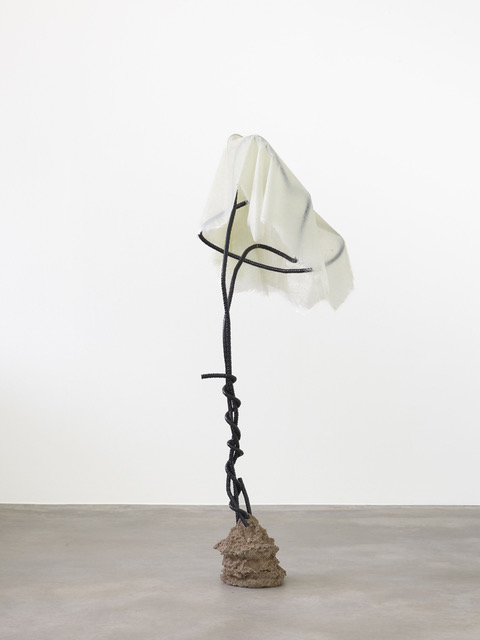
Monika Sosnowska
Ghost II, 2024
Concrete, steel, fibre glass
178 x 60 x 65 cm
70.1 x 23.6 x 25.6 inches
(B-MSOSNOWSKA.-25-0002)
© Monika Sosnowska
Courtesy the artist and Capitain Petzel, Berlin
Ph: Simon Vogel
In addition to several younger artists, such as Daria Blum, Urban Zellweger, William Gaucher and Xie Lei (who recently was awarded the Prix Marcel Duchamp), works by Mike Kelley and Monika Sosnowska, among others, will be on display. The central exhibit is Martin Kippenberger’s large installation Jetzt geh ich in den Birkenwald, denn meine Pillen wirken bald (Engl. transl. Now I’m going to the birch forest, because my pills will soon take effect), which will be shown in Berlin for the first time.
Samuel Beckett’s 1973 film NOT I, famously performed by Billie Whitelaw and directed by Anthony Page, will be presented in the basement space.”
Bolero Bordello – Berlin Rhapsody
30 Min Live Performance with Matthew Lutz-Kinoy and PRICE. Music Arrangement by Merlin Modulaw
5 DEC 2025 at 7 pm
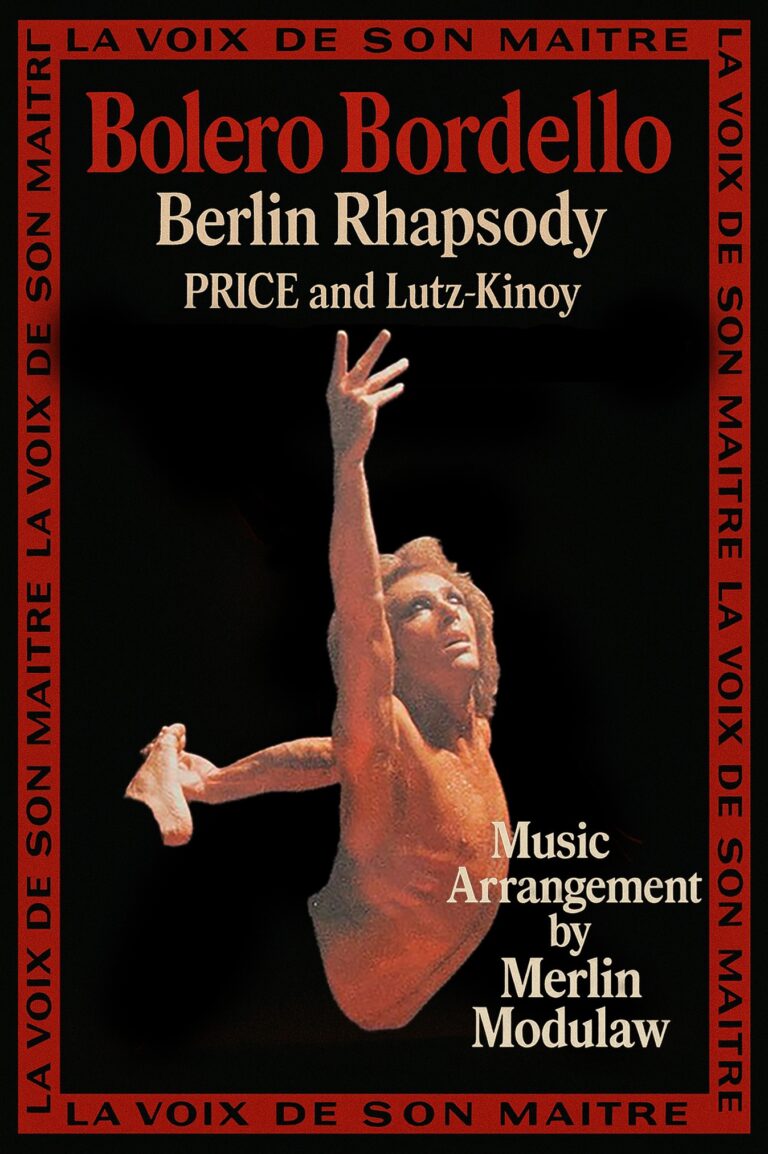
Bolero Bordello – Berlin Rhapsody is a 30-minute live performance unfolding within the environment of the exhibition currently on view at Capitain Petzel. Set among paintings, objects, and architectural gestures, the performance shifts the gallery into an active stage – blurring installation, choreography, and concert.
Through sound, movement, and voice, the event revisits Maurice Ravel’s Bolero and its long lineage of interpretations, starting with Bronislava Nijinska’s 1928 choreography and Maurice Béjart’s legendary version with Jorge Donn as La Mélodie, embracing their intensity, theatricality, and the tension between sincerity and camp.
The performance engages with Bolero’s dual nature – both as a high-modernist ballet and as a popular, transcultural rhythm that has traveled across decades and styles. Using the repetition and seduction of Bolero, it explores themes of collectivity, transformation, and the porous edge between historical context and contemporary experience.
With Matthew Lutz-Kinoy and PRICE. Music Arrangement by Merlin Modulaw
Matthew Lutz-Kinoy
Bolero Bordello
31 OCT until 20 DEC 2025
Opening – 31 OCT 2025, 6-8 pm
Capitain Petzel is pleased to announce Matthew Lutz-Kinoy’s first solo exhibition with the gallery, Bolero Bordello.
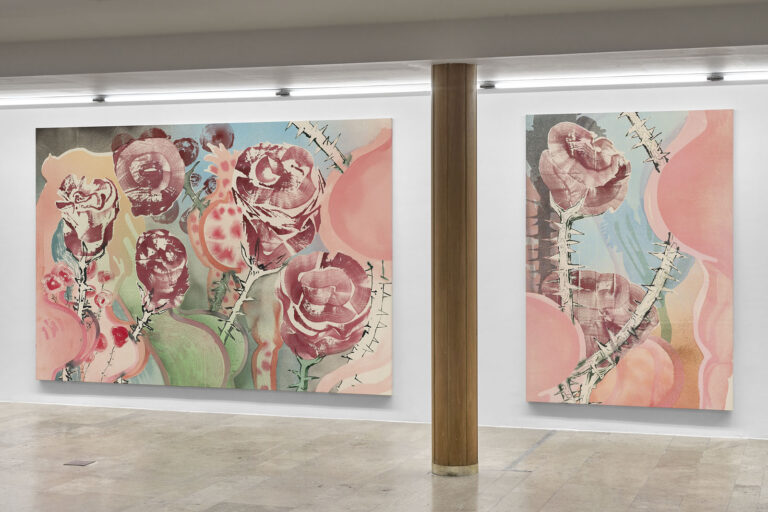
Installation view
© Matthew Lutz-Kinoy
Courtesy the artist and Capitain
Lutz-Kinoy treats exhibitions like immersive architectures, positioning painting as backdrop and sculpture as spatial intervention. Often conceived as total environments, his works respond to a venue’s architecture and site-specificity, entwining sensual, silhouetted bodies with recurring ornamental motifs, vegetation and floral arabesques, references to art historical movements, from Expressionism and Art Nouveau to Rococo flourishes. His paintings also carry the carnal vitality of 18th-century traditions, with dynamic bodily forms, gestural brushwork and ethereal layers, coupled with an ability to traverse a transhistorical landscape. These sensuous environments can feel like entry points to alternative spaces of communion, where the synergy of historical ornament and abundance lingers in compositions that suspend urgency, acting as parts of an escapist practice. Pleasure, color, intimacy and motion are foregrounded, as Lutz-Kinoy cultivates spaces where existential and emotional possibilities can unfold, allowing alternative forms of freedom to surface. Working across painting, ceramics and performance, the artist develops a plural and cross-referential practice that draws on diverse historical lineages.
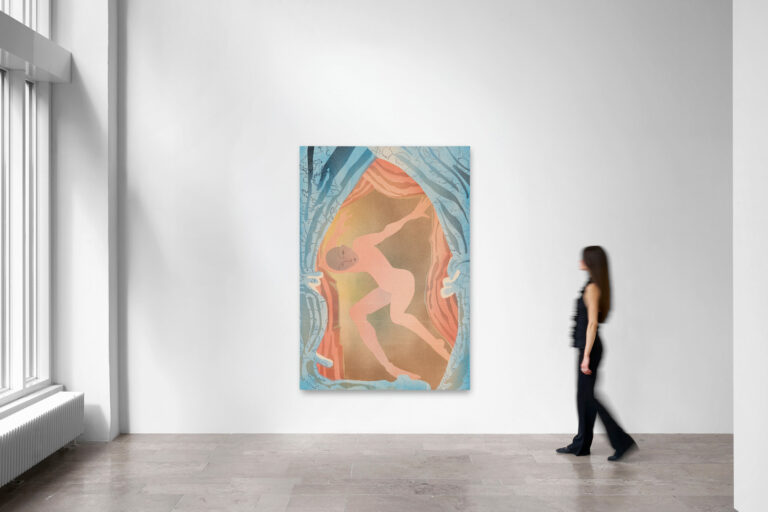
© Matthew Lutz-Kinoy
Courtesy the artist and Capitain
Petzel, Berlin
Ph: Romain Darnaud
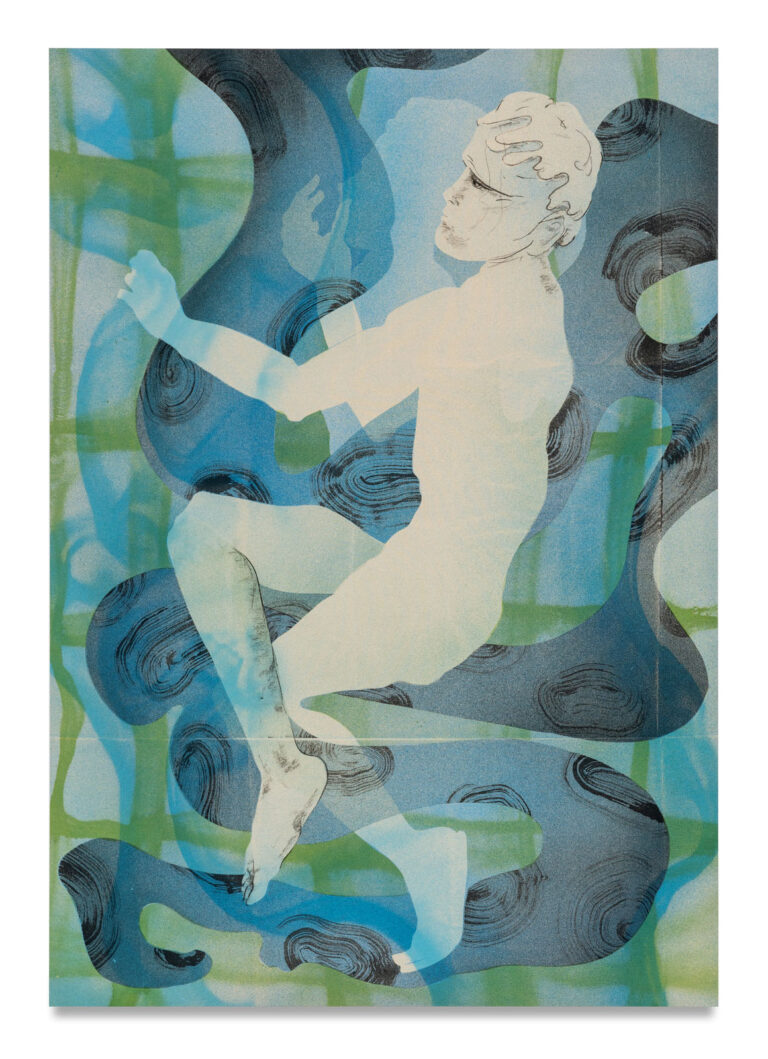
Matthew Lutz-Kinoy
Choreography at Bellevue green net, 2025
Acrylic and charcoal on canvas
215 x 150 cm
84.7 x 59.1 inches
(B-MLUTZKINOY-.25-0016)
© Matthew Lutz-Kinoy
Courtesy the artist and Capitain
Petzel, Berlin
Ph: Romain Darnaud
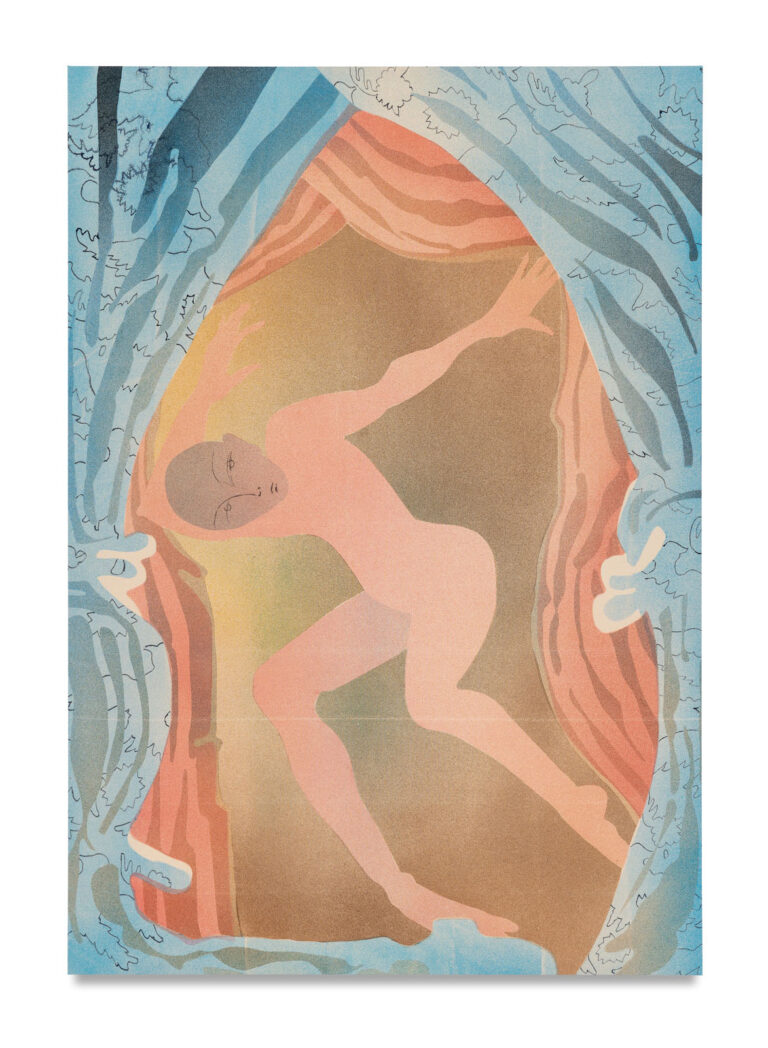
Matthew Lutz-Kinoy
Firebird, 2025
Acrylic and colored pencil on canvas
215 x 150 cm
84.7 x 59.1 inches
(B-MLUTZKINOY-.25-0018)
© Matthew Lutz-Kinoy
Courtesy the artist and Capitain
Petzel, Berlin
Ph: Romain Darnaud
Lutz-Kinoy’s is a practice grounded in performance, marked by a fluid sense of movement and collective collaboration. In projects such as Filling Station at The Kitchen (2023), he re-staged a 1938 ballet as a live event that blended dance, music, and painting in real time. Similarly, his expansive ceramic productions, executed with skilled artists and artisans, transform making into a communal performance, where process and interaction are integral. For his exhibition at the gallery, he also welcomes the participation of his contemporaries, with written and performed contributions by the artists Isabel Lewis, Niall Jones and PRICE. A model of radical interdisciplinarity in the early 20th century, the Ballets Russes is a point of reference in the exhibition. Lutz-Kinoy re-imagines forms and symbols of a lineage where performance and visual spectacle merged. The works on view navigate towards the iconic and dramatic narratives of the historic company; flowers painted in human scale imagine Vaslav Nijinsky as an anthropomorphic thorned rose. And, as if lifted from the canvas, suspended paper lanterns painted with graphic floral iconography punctuate the gallery. Two painted canvases, each informed by the performance practices of Isabel Lewis and Niall Jones, reach floor to ceiling, segmenting the space into a metered rhythmic dramaturgy. These monumental paintings emphasize Lutz-Kinoy’s treatment of floors, walls and ceilings as active surfaces, creating a spatial dialogue that turns the show into an ephemeral setting. Bolero Bordello reflects Lutz-Kinoy’s interest in mirroring song structure within exhibition design. Taking inspiration from Maurice Ravel’s Boléro, originally choreographed by Bronislava Nijinska, the composition engages with the legacy of the Ballets Russes and the aftermath of Sergei Diaghilev’s creative and bordellic universe. Through its cyclical rhythm, sensual repetition, and collaborative ethos, Boléro reimagines the decadent theatricality and cross-disciplinary experimentation that defined Diaghilev’s epoch. In Lutz-Kinoy’s hands, this legacy becomes a spatial choreography.
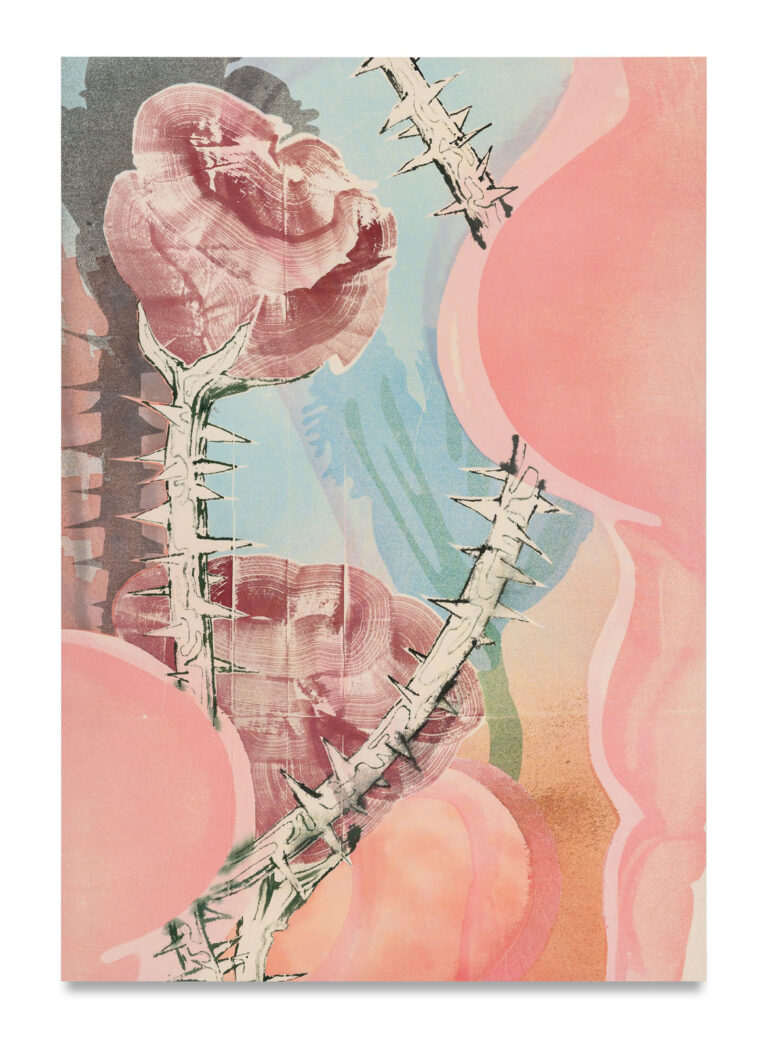
Matthew Lutz-Kinoy
Repetition Is The Miracle, 2025
Acrylic on canvas
215 x 150 cm
84.7 x 59.1 inches
(B-MLUTZKINOY-.25-0019)
© Matthew Lutz-Kinoy
Courtesy the artist and Capitain
Petzel, Berlin
Ph: Romain Darnaud

Matthew Lutz-Kinoy
Le Spectre de la rose, 2025
Acrylic on canvas
215 x 150 cm
84.7 x 59.1 inches
(B-MLUTZKINOY-.25-0020)
© Matthew Lutz-Kinoy
Courtesy the artist and Capitain
Petzel, Berlin
Ph: Romain Darnaud

Installation view
© Matthew Lutz-Kinoy
Courtesy the artist and Capitain
Accustomed to the harsh breaks of modernity, it has become increasingly difficult to recognize forms that strive to weave connections and heal the fractures caused by disconnection. Echoing past moments when art forged unexpected alliances, such forms work to mend divides and renew a sense of shared continuity. The Ballets Russes’ legacy resonates today partly because it emerged from a Russia on the brink of revolution, when artists sought freedom of expression beyond state confines. Among its brightest figures was Vaslav Nijinsky, whose radical choreography and magnetic performances – preserved in part through the writings and later recollections of his daughter Kyra – embodied the troupe’s daring spirit. The company’s collaborations with composers like Igor Stravinsky, particularly the groundbreaking 1910 premiere of The Firebird, fused modernist music and dance into a new, electrifying form. In the current political climate, marked by censorship and geopolitical conflict, this history of cosmopolitan collaboration and artistic exile gains renewed urgency as a symbol of cultural openness and resistance to authoritarianism. Infused with a lyrical rhythm, Lutz-Kinoy’s use of historical ornament and material abundance interlace to form sensuous atmospheres that resonate with the Ballets Russes’ synthesis of dance, music, and visual art.

Matthew Lutz-Kinoy
Tamara Karsavina’s Molten Plumage, 2025
Acrylic and charcoal on canvas
215 x 150 cm
84.7 x 59.1 inches
(B-MLUTZKINOY-.25-0017)
© Matthew Lutz-Kinoy
Courtesy the artist and Capitain
Petzel, Berlin
Ph: Romain Darnaud
Amy Sillman (with Marina Rosenfeld, sound)
Minute Cinema: 4 videos for 4 seasons
31 OCT until 20 DEC 2025
Opening – 31 OCT 2025, 6-8 pm
Capitain Petzel is pleased to announce Minute Cinema: 4 videos for 4 seasons, a presentation by Amy Sillman with sound by Marina Rosenfeld.
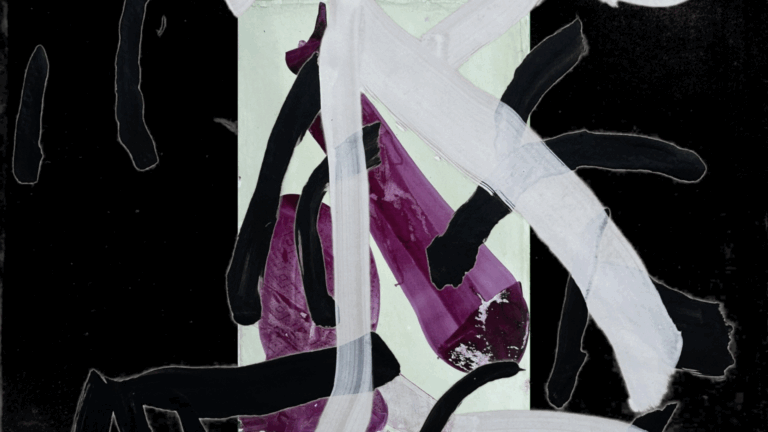
Amy Sillman (with Marina Rosenfeld, sound),
Minute Cinema: 4 videos for 4 seasons, (2024-2025), (video still)
Amy Sillman began experimenting with handmade animation in the early 2010s as a way to further extend her practice, which had already expanded to zine-making in 2009. Her short digital videos, often made by scanning or photographing drawings and painting fragments, then sequencing them frame by frame, create a sense of restless transformation. These works occupy a fascinating space between painting, drawing, and the moving image. They feel intimate and provisional, like notes or thoughts caught in motion. Sillman has described animation as “drawing that moves”, and her videos indeed retain the tactile, handmade quality of her studio process.
Minute Cinema: 4 videos for 4 seasons (2024–25) was commissioned by The Washington Post, which invited Sillman to create an artwork and write a column once per season for a year. In the politically charged year leading up to the election, she proposed a project deliberately “out of sync” with the expectations of a major newspaper and its readership: a one-minute animation for each season, each with a distinct mood. She invited composer and artist Marina Rosenfeld to collaborate on the sound. The first animation, Abstraction as Ruin (Spring), was followed by Abstraction as Apprehension (Summer) and Abstraction as X-Ray (Fall). The final fourth video did not appear in the Washington Post, but Sillman and Rosenfeld completed the cycle with Abstraction as Insomnia (Winter) made specifically for this exhibition.
The four works extend Sillman’s long-standing dialogue between painting, drawing, and movement into a cyclical meditation on time, perception, and emotional weather. Each short animation translates her gestural vocabulary of figures, marks, and color fields that continuously dissolve and re-form into motion. Rather than illustrating the seasons literally, the series uses them as metaphors for psychic and social states: renewal, collapse, hesitation, and recovery. Hand-drawn frames compose short bursts of unstable forms, set to Rosenfeld’s layered sound, which ranges from slapstick to dissonance. The humor and absurdity of the animations carry a political undertone, an insistence that abstraction and awkwardness might still serve as tools of survival in the face of collective crisis.
As figures fumble their way into abstraction, accompanied by improvised soundtracks and fragments of conversation, the comic deepens into an inquiry into emotion and perception: how does an image convey a feeling that changes before it can be fixed? In this sense, Sillman’s videos extend the psychological and philosophical concerns of her painting – about embodiment, intimacy, and uncertainty – into the temporal dimension of film.
Rosenfeld’s sound design, shifting between resonance and stillness, amplifies this sense of precarious interiority, of breathing through instability. Across the cycle, Sillman turns animation into a time-based analog of painting: a process of perpetual becoming rather than depiction. Her seasonal videos are not simply about nature’s rhythms but about the mutable, vulnerable conditions of consciousness itself – how thought, emotion, and form continually break down and regenerate in the shared air we breathe.
Amy Sillman’s recent retrospective exhibition took place at Kunstmuseum Bern and Ludwig Forum, Aachen.
A comprehensive presentation of paintings on paper by the artist was on view in the exhibition The Milk of Dreams, curated by Cecilia Alemani at the 59th Biennale di Venezia. Sillman has held solo exhibitions at major international institutions, most recently at the Arts Club of Chicago; The Camden Arts Center, London, and Kunsthaus Bregenz, as well as group shows at the Lenbachhaus, Munich; Whitney Museum of American Art, New York; Tate Modern, London, and MoMA, New York.
Her work can be found in the permanent collections of the MoMA, New York; Whitney Museum of American Art, New York; Tate Modern, London; Musée d’Art Moderne, Paris; Morderna Museet, Stockholm; Museum of Fine Arts, Boston; Art Institute of Chicago; Hammer Museum, Los Angeles; Museum Brandhorst, Munich, and many more.


